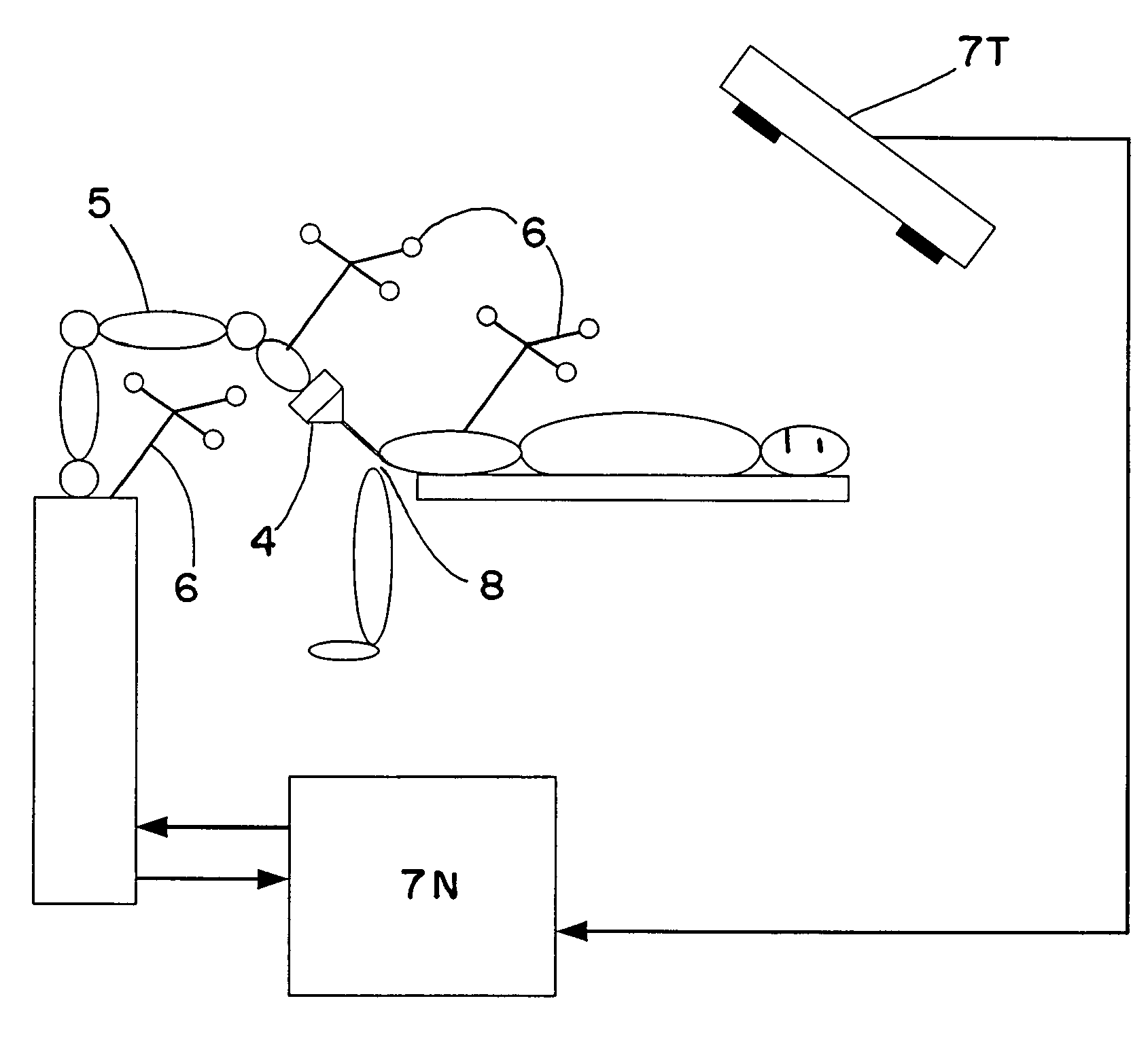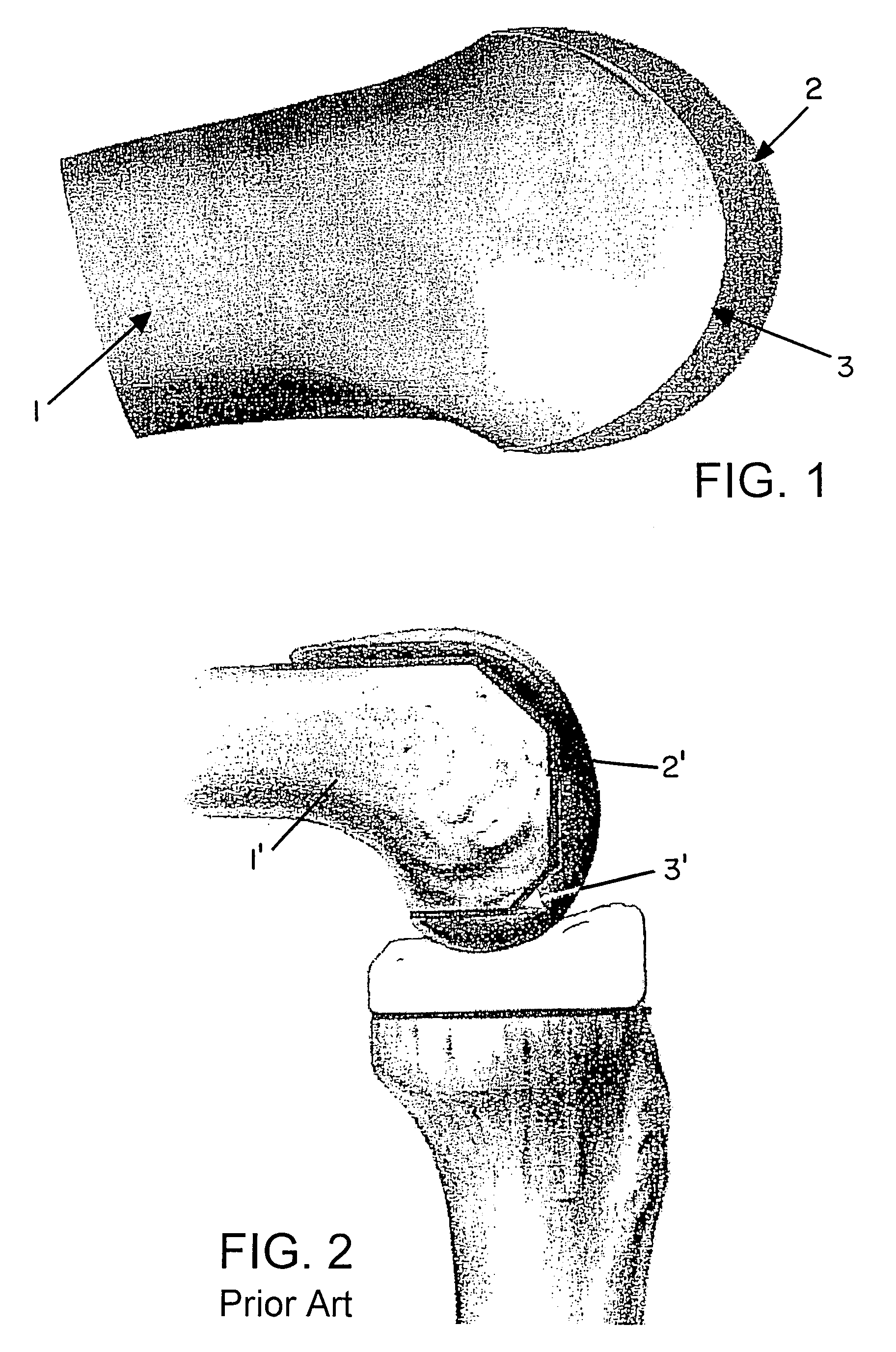Planning method and system for free-form implant modification
a free-form, bone implant technology, applied in the field of bone implants, can solve the problems of uneven bone removal, uneven bone removal, and inability to accurately plan the above method, so as to improve the planning and preparation of the bone.
- Summary
- Abstract
- Description
- Claims
- Application Information
AI Technical Summary
Benefits of technology
Problems solved by technology
Method used
Image
Examples
Embodiment Construction
[0034]FIG. 1 shows a bone 1 wherein an implant 2 has been modified and attached to the bone. The exemplary implant 2 is configured to be round on its outer side, and its inner side has a form which is accurately modified to a free-form area 3 formed on the bone 1 based on a method described herein. It can be seen that the surface 3 of the bone 1 in the region of the implant 2 no longer consists of a sequence of smooth or flat planes, as has been the case in accordance with the prior art (see, e.g., FIG. 2), but rather exhibits a free form that shows bearing, healthy and functional bone material at each point on the surface 3. When comparing FIGS. 1 and 2, it can be seen that significant bone material is saved using the free-form method described herein relative to the prior art.
[0035]Although the free-form area 3 is shown as a curved area, the shape may be any shape that is conducive to retaining as much bone material as possible while providing a satisfactory support and bonding su...
PUM
 Login to View More
Login to View More Abstract
Description
Claims
Application Information
 Login to View More
Login to View More - R&D
- Intellectual Property
- Life Sciences
- Materials
- Tech Scout
- Unparalleled Data Quality
- Higher Quality Content
- 60% Fewer Hallucinations
Browse by: Latest US Patents, China's latest patents, Technical Efficacy Thesaurus, Application Domain, Technology Topic, Popular Technical Reports.
© 2025 PatSnap. All rights reserved.Legal|Privacy policy|Modern Slavery Act Transparency Statement|Sitemap|About US| Contact US: help@patsnap.com



